
Charles Dickens: Novelist
Dickens completed 14 novels in his lifetime leaving The Mystery of Edwin Drood unfinished at his death in 1870. Dickens
wrote numerous shorter works of fiction, including five Christmas Books, the first of which, A Christmas Carol, has become an enduring classic. Below are some short introductions to the novels and to A Christmas Carol, in the order in which they
were written.”
All of the novels are available to download free from gutenberg.org
Pictures of the original monthly covers are reproduced with permission of The Dickens Museum
Pickwick Papers
A rambling tale about the adventures of the naive good-natured Mr Pickwick and his travelling companions. The streetwise Sam Weller, recruited along the way by Pickwick, helps them to survive. Full of fun, capturing the exuberant spirit of the young Dickens, this work built on his earlier Sketches by Boz to catapult him to fame and is still one of the best loved books in English Literature.
Download and read Pickwick Papers at Project Gutenberg
1836-1837
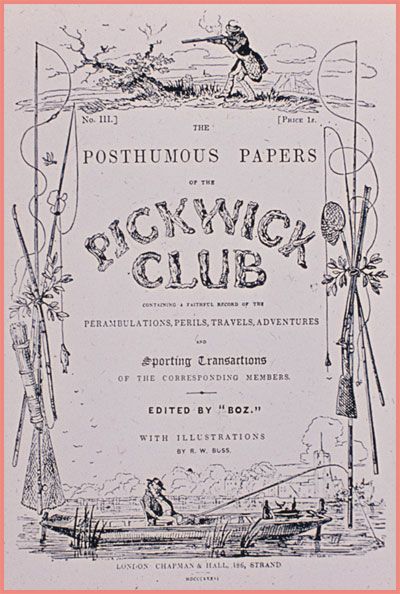
Oliver Twist
With a serious theme, to expose the abuse and corruption suffered by children, this second major work is nevertheless full of humour, but of a satirical kind. The orphan Oliver Twist manages to survive the worst that the authorities and criminal fraternity put him through. The scene of Oliver's plea in the workhouse for more to eat is familiar to countless millions, even to those who have never read the book.
Download and read Oliver Twist at Project Gutenberg
(1837-1839)
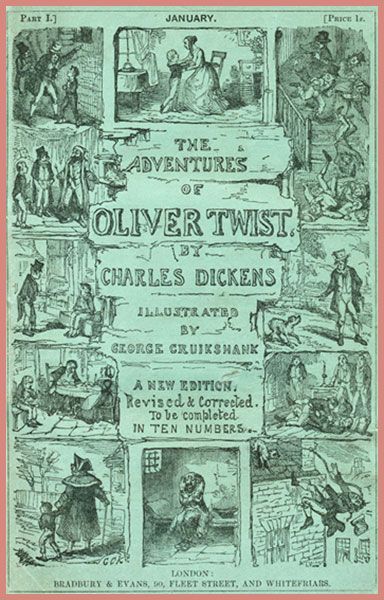
Nicholas Nickleby
A tale of how the young Nicholas Nickleby and his sister make good after they and their mother are left penniless. Following a bad start working under Wackford Squeers, the cruel schoolmaster of a Yorkshire boarding school, Nicholas comes eventually to thrive, thanks in great measure to the help of Newman Noggs, clerk to his hateful uncle, and to the goodwill of the Cheeryble brothers, benevolent businessmen.
Download and read Nicholas Nickleby at Project Gutenberg
(1838-1839)
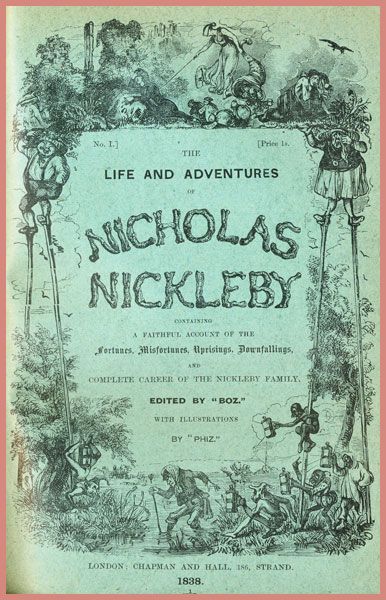
The Old Curiosity Shop
This story, written for the shortlived magazine Master Humphrey's Clock, has a young girl, Little Nell, fleeing with her grandfather from the clutches of the repulsive Quilp, a malicious moneylender. Their flight exposes them to a variety of experiences and characters, many having to do with the vagabonds and itinerant entertainers of the time. The death of Little Nell is among the best known scenes in the works of Dickens.
Download and readThe Old Curiosity Shop at Project Gutenberg
(1840-1841)

Barnaby Rudge
The first of Dickens's two historical novels, set in the period that led up to the Gordon Riots of 1780 against Roman Catholicism. Barnaby is a half-witted young man who becomes caught up in the mayhem, but escapes the gallows through the intervention of Gabriel Varden, a locksmith. Dolly Varden, the coquettish daughter of Gabriel, is a creation whose name was subsequently used for a style of dress and hat.
Download and read Barnaby Rudge at Project Gutenberg
(1841)
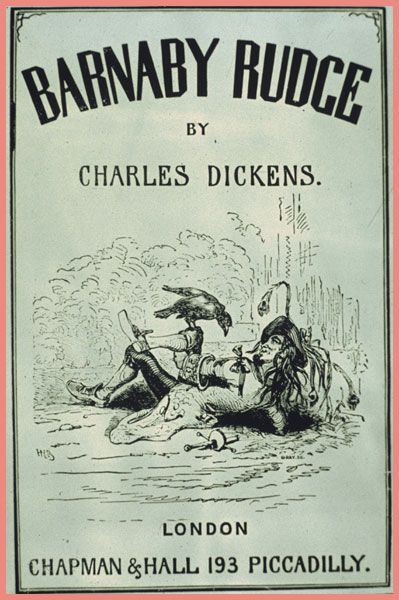
Martin Chuzzlewit
Selfishness, as typified by the young Martin Chuzzlewit, and hypocrisy, as typified by Mr Seth Pecksniff, who purports to be an architect, are among the themes of this work. Martin is chastened and humbled by his experiences in the USA, which Dickens portrays as a country full of vulgar, brash and boastful people. This work contains one of Dickens's great creations: the often intoxicated Mrs Sairey Gamp, a midwife, sick nurse and layer-out of the dead.
Download and read Martin Chuzzlewit at Project Gutenberg
(1843-1844)
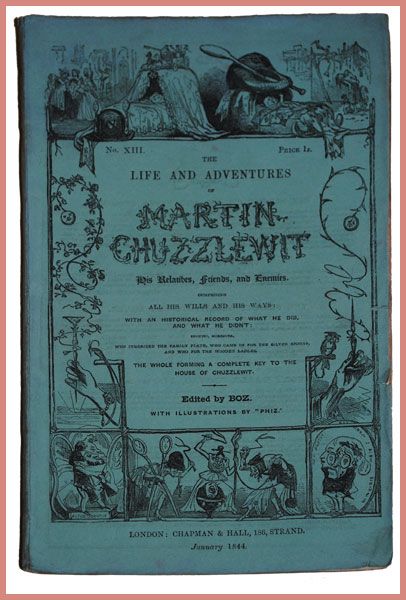
A Christmas Carol
The first of five Christmas books written by Dickens in the 1840s, this is one of the best known and best loved of all his works. It tells of the transformation of Ebenezer Scrooge from a tight-fisted curmudgeon to a generous and genial man. This is brought about by a haunting and visions at Christmas that remind him of happier days, demonstrate the generous spirit of others in adversity, and terrify him with dire prospects should he not change his ways.
Download and read A Christmas Carol at Project Gutenberg
(1843)
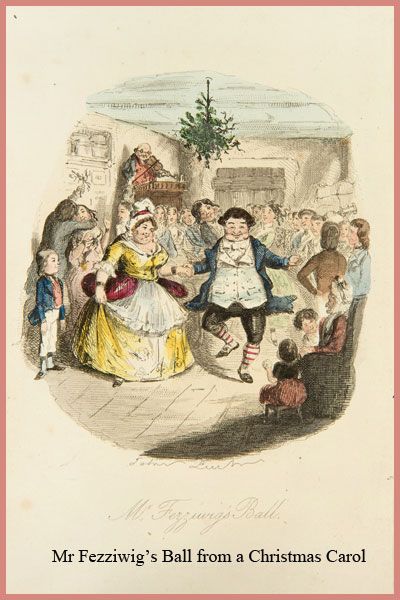
Dombey and Son
Pervading this work are the pride and cold-hearted obduracy of Mr Paul Dombey Senior, a businessman. Following the death of his first wife, he invests all of his hopes in Paul, their only son, neglecting their daughter, Florence. But the fragile boy dies. Dombey marries again, but his will is thwarted by stubborn resistance and treachery, and he loses his fortune. A broken man, he is eventually reconciled to his daughter who has remained true throughout.
Download and read Dombey and Son at Project Gutenberg
(1846-1848)
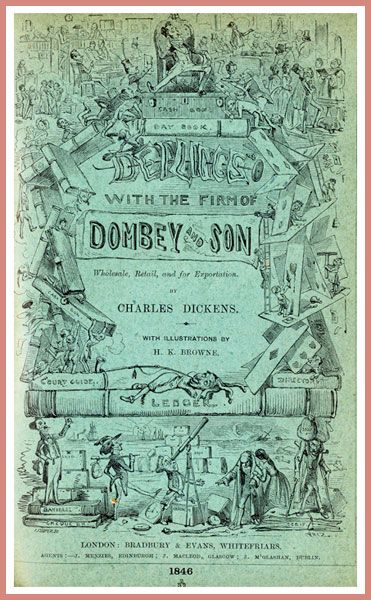
David Copperfield
This story, narrated in the first person, of a man who becomes a successful author, is partially autobiographical. It is generally considered to be a masterpiece. Leo Tolstoy, who was greatly influenced by it in his early writing, accorded it the highest of rankings. The quality of writing is especially evident in the description of a storm. Among a number of memorable characters is that of Mr Wilkins Micawber, who resembles in some respects Dickens's father.
Download and read David Copperfield at Project Gutenberg
(1848-1850)
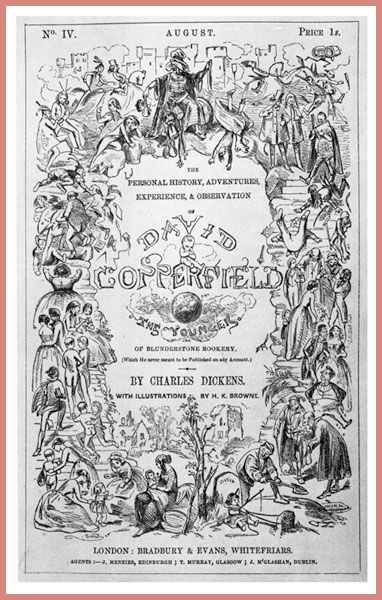
Bleak House
A prolonged law case concerning the distribution of an estate, which brings misery and ruin to the suitors but great profit to the lawyers, is the foundation for this story. Told in part through the eyes of the principal character, Esther Summerson, it is a complex one involving a good many secrets, a murder and a number of investigators. Among these is a professional detective, Inspector Bucket. Bleak House, like Little Dorrit, is one of Dickens’s great critiques of the Condition of England.
Download and read Bleak House at Project Gutenberg
(1851-1853)

Hard Times
The shortest of Dickens's novels, set in a northern industrial town, this champions imagination, fun and experience against the fact-based, stern and bookish philosophies of the time, as epitomised in the outlook of Thomas Gradgrind, one of the principal characters. Faced with the effects of his rigid attitudes on the lives of his son and daughter, he comes to accept the emptiness of his pet precepts.
Download and read Hard Times at Project Gutenberg
(1854)

Little Dorrit
Here Dickens plays on the theme of imprisonment, drawing on his own experience as a boy of visiting his father in a debtors' prison. William Dorrit is locked up for years in that prison, attended daily by his daughter, Little Dorrit. Her unappreciated self-sacrifice comes to the attention of Arthur Clennam, recently returned from China, who helps bring about her father's release but is himself incarcerated for a time when his business speculation fails. Little Dorrit, unable to adjust to a world of plenty, eventually finds contentment caring for Clennam and, following the loss of her father and the family fortune, they marry. Little Dorrit, like Bleak House, is one of Dickens’s great critiques of the Condition of England.
Download and read Little Dorritt at Project Gutenberg
(1855-1857)

A Tale of Two Cities
This, the second of Dickens's two historical novels, relates to the French Revolution, the two cities being London and Paris. French-born Charles Darnay, settled in London, returns to Paris to help save the life of his agent, but is eventually himself condemned to death. He is saved by the self-sacrifice of Sydney Carton, who takes his place, having previously led a debauched and wasteful life. Carton's words at the very end of the novel are widely familiar: "It is a far, far better thing that I do, than I have ever done; it is a far, far better rest that I go to than I have ever known."
Download and read A Tale of Two Cities at Project Gutenberg
(1859)

Great Expectations
Like David Copperfield, this story is narrated in the first person. The narrator, Philip Pirrip, known as Pip, looks back over his life, from his rural boyhood, under the care of a ferocious sister and her mild husband, a blacksmith, to living the life of a gentleman in London, funded by a mysterious benefactor. The mystery solved, his pretentiousness was destroyed, and he then had to cope with some harsh realities, remorseful of the way he had treated those who loved him most. Central to the story is the strange recluse, Miss Havisham, deranged by having been jilted on her wedding day.
Download and read Great Expectations at Project Gutenberg
(1860-1861)
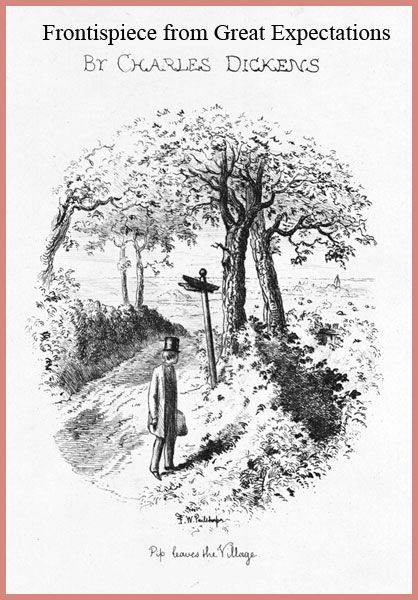
Our Mutual Friend
The basis of this carefully plotted story is the desire of John Harmon, an heir to the fortune of a refuse contractor, to disguise his identity till he has formed an opinion of Bella Wilfer, the woman he is supposed to marry under the terms of his father's will. From the time he finds himself assumed dead, complications abound, but all turns out well in the end. Opinions differ widely as to the ranking of this novel, the last which Dickens completed, but it is undoubtedly a model of his outstanding craftmanship.
Download and read Our Mutual Friend at Project Gutenberg
(1864-1865)

The Mystery of Edwin Drood
Dickens had completed nearly half of this story when he died. Speculation about how it would have ended has since tended to attract greater interest than any assessment of the work as it stands. The central mystery of the story arises from the disappearance of Edwin Drood. It seems likely that he has been murdered. There is evidence to suppose that this is what Dickens had had in mind, but the identity of the murderer, if there was such, has been a cause of much dispute. The episodes published were very popular and some passages are considered to be among the most sublime that Dickens wrote.
Download and read The Mystery of Edwin Drood at Project Gutenberg
(1870)
